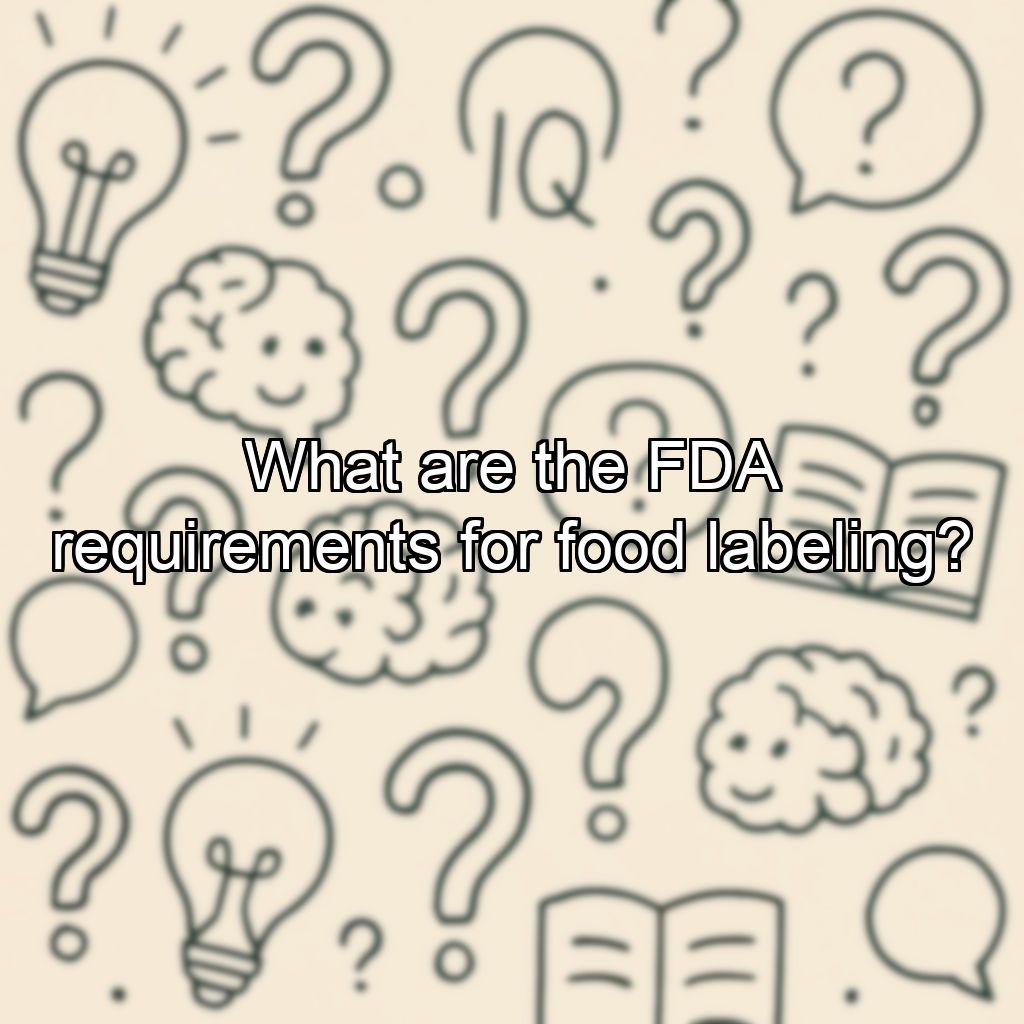What are the FDA requirements for food labeling?

FDA Requirements for Food Labeling
The U.S. Food and Drug Administration (FDA) establishes comprehensive regulations to ensure that food labels provide accurate and useful information to consumers. These requirements are outlined primarily in the FDA's Food Labeling Guide and associated regulations.
Key Labeling Requirements
- Principal Display Panel (PDP): This is the part of the label most likely to be seen by the consumer at the point of purchase. It must include the product name and other essential information.
- Statement of Identity: Clearly indicates what the product is, using a common or usual name.
- Net Quantity: Displays the amount of product in terms of weight, volume, or numerical count.
- Ingredients List: Lists all ingredients in descending order by weight, including any allergens.
- Nutrition Facts Panel: Provides detailed information about serving size, calories, macronutrients, vitamins, minerals, and other nutritional data.
- Allergen Labeling: Must declare the presence of major food allergens such as milk, eggs, fish, shellfish, tree nuts, peanuts, wheat, and soybeans.
- Manufacturer Information: Includes the name and address of the manufacturer, packer, or distributor.
Additional Considerations
- Labels must be truthful and not misleading.
- Any claims (e.g., health claims, nutrient content claims) must comply with FDA regulations.
- Labels should be in English, though other languages can be included.
- Special labeling may be required for certain products, such as organic or genetically modified foods.
Compliance and Enforcement
Manufacturers, packers, and distributors are responsible for ensuring their labeling complies with FDA regulations. Non-compliance can result in warning letters, product seizures, or recalls.